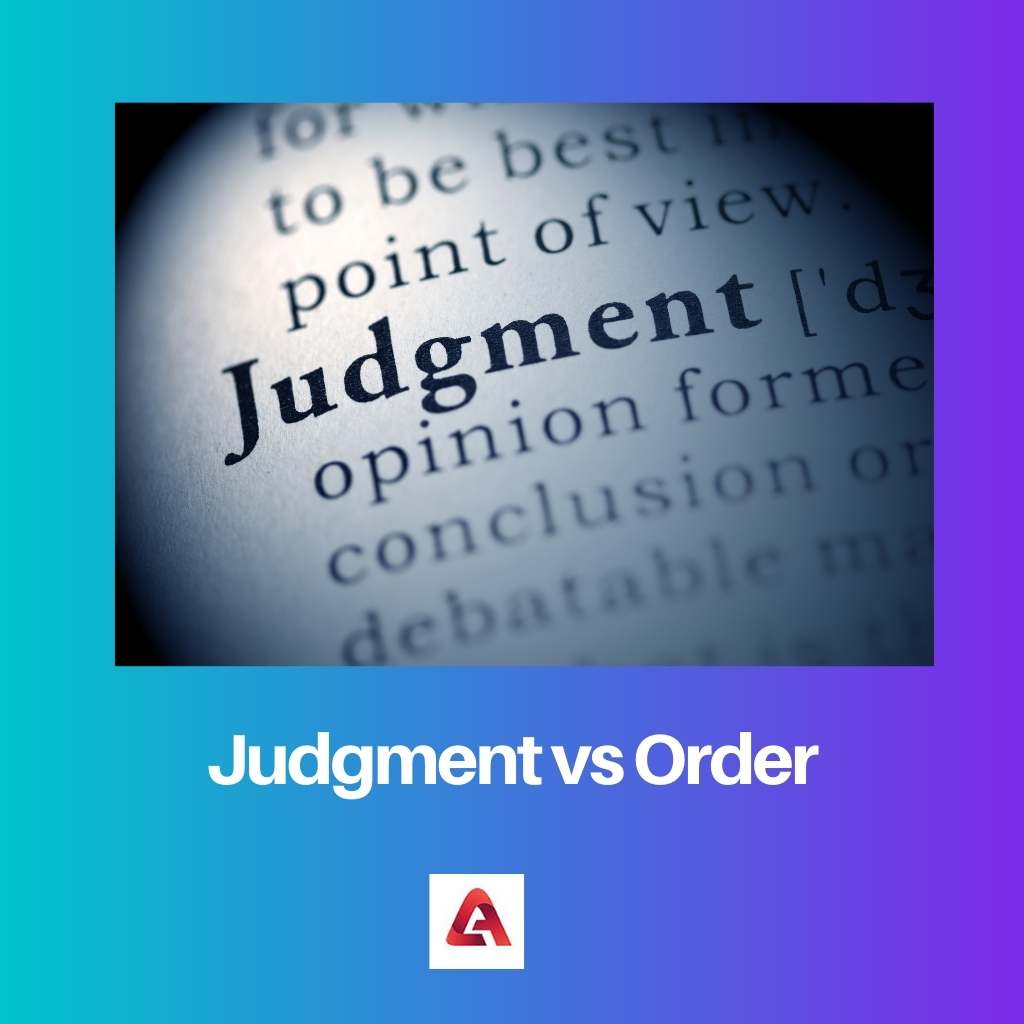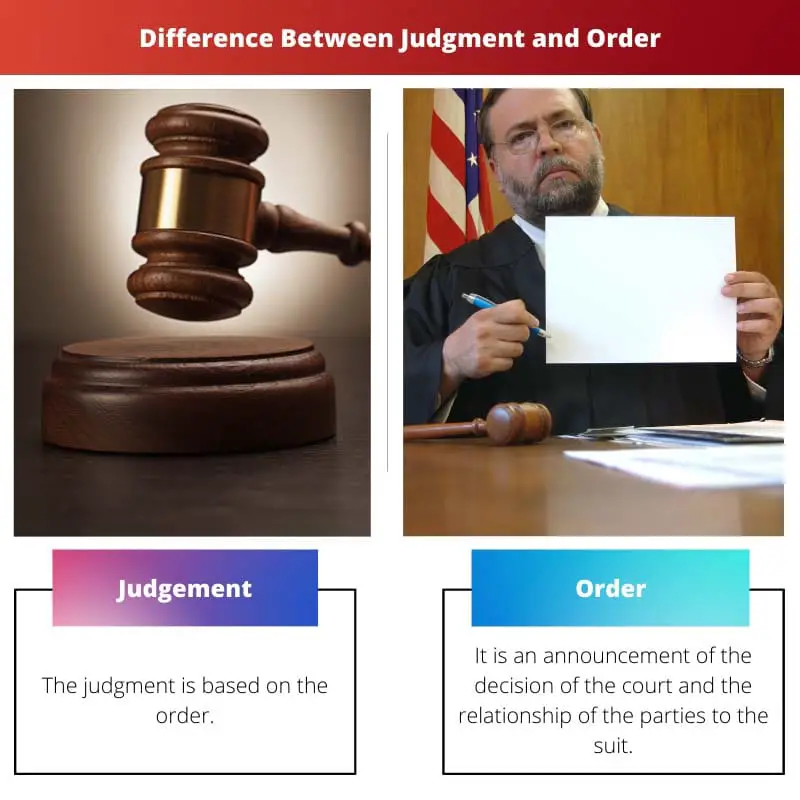
Law is a set of rules and regulations created and enforced in every country and community. There are government institutions to protect the law and uphold the same. When you witness a court proceeding, there is numerous judicial terminology utilized.
The most common ones are appeal, order, decree, and judgment. It is essential to understand the terminology for the smooth functioning of the judicial system.
Two crucial terms are judgment and order. Judgment is the decision given by the judge, and the order is the preliminary issue in any case. Both these terms are a chief component of the Judicial system.
Judgement is a statement that is given based on a decree or an order by the judge or jury. The judgement includes the facts, pieces of evidence, conclusive decision, and the judge’s point of view. Order is a direction given by the judge or the court in writing or verbally, during hearings, appeals, and trials.

Judgment is the outcome of the court or a jury. The judgment must contain all the details essential to the case-based. The point of determination, the decision taken, the reason for the decision taken, and the relief granted.
The judgment contains the abridged statement of the case.
Order is an announcement of the decision of the court. The order defines the relationship between the parties to the case but may not ascertain the rights to the parties.
The nature of the order could be appealable or non-appealable in the court. The civil court must take the decision for the order to come into effect.
Also Read: Section 504 vs IDEA: Difference and Comparison| Parameters of Comparison | Judgment | Order |
|---|---|---|
| Nature | The judgment is based on the order. | It is an announcement of the court’s decision and the parties’ relationship to the suit. |
| Appeal | The judgment cannot be appealed. | The order can be appealable or non-appealable. |
| Format | Due to the nature of the document, the judgment is always written. | The judge can verbally proclaim the order. |
| Status | The judgment is the court’s final say regarding the legal suit. | The order does not imply the end of the legal suit. |
| Documentation | The judgment follows a proper format for documentation. | The order can be anything simple like – the date or the nature of the case. |
Judgment refers to a statement given based on the ground of an order or a decree.
It refers to the judge or jury’s point of view and the decision taken based on it, and the Judgments include the facts, findings, pieces of evidence, and the conclusive decision made by the court.
A conclusion of a civil suit is a judgment. It determines the right and liabilities of the parties to the legal case. Judgment creates a resolution for the controversies and decides the obligation of each party of the suit.
They could be obligated to pay charges, imprisoned, or cleared from charges and then mentioned in the judgment copy.
After the presentations by all parties, fact-finding, and interrogation, the court or the jury is bound to present the final verdict. Judgment ends the court’s say in the case.
The content of the judgment follows a formal format. As the nature of the document is crucial, the judgment is always in writing.
Once the judgment is conveyed judge must sign, and the judgment date is mentioned in the open court. After being signed by the judge, the judgment cannot be altered or amended.
The only provision for amendment given is any clerical or accidental omissions.
The following are the essential elements of the judgment:

The order is directions given by the court or a judge verbally or in writing, which directs some steps towards the proceedings. The order is issued during hearings, trials, appeals, and other court proceedings.
Also Read: What is Political Science? | Definition, Studies, Pros vs ConsThe order is a decision of the court defining the relationship of the parties to the suit and the procedural legal rights of the parties. There are chances of more than one order being issued during the suit, which might spell the parties’ rights.
The purpose of court orders includes the following:
In trial courts, a party obtaining a favourable decision is responsible for writing a proposed order. This is forwarded to the other party for any amendments. Once agreed by both parties, it is then presented to the court for settlement and approval.
The order must be entered, filed, or incorporated into the minutes of the court. Order is Appealable, in which an appeal lies, and non-appealable order, in which no appeal lies.
There are two classes of order:

I’ve put so much effort writing this blog post to provide value to you. It’ll be very helpful for me, if you consider sharing it on social media or with your friends/family. SHARING IS ♥️